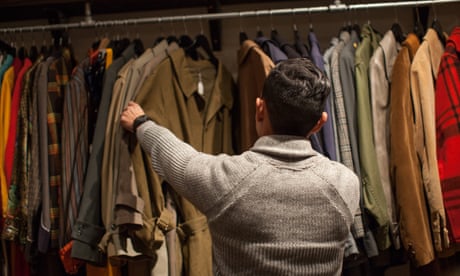
Secondhand clothing sales are on track to make up a tenth of the global fashion market next year, as the cost of living crisis and concerns over sustainability drives consumers towards “pre-loved” garments.
Global sales of pre-owned clothes surged by 18% last year to $197bn (£156bn) and are forecast to reach $350bn in 2028, according to a report by GlobalData for resale specialist ThredUp. The landmark is expected to be reached a year later than predicted, as global growth remains slightly behind previous estimates.
However, the US secondhand market grew seven times faster than overall fashion retail where sales were flat in 2023 from a year earlier.
James Reinhart, the co-founder and chief executive of ThredUp, said the resale sector had continued to grow in a tough market because it was “more resilient” when household budgets were squeezed by higher energy and food bills.
“When consumer sentiment is softer, value is key,” he said. “People are looking to shop secondhand to drive more value.”
He said that interest in secondhand items was not just limited to younger shoppers searching for fashionable finds but was starting to “span generations”.
The report found that more than half of all shoppers had bought something secondhand in the past year – although that rose to 65% of generation Z and millennials – those aged between 12 and 43. Almost two in five – 38% of consumers – said they shop secondhand to afford higher end brands.
For young people, the trend is being driven by the ease of digital secondhand shopping at sites such as Vinted and Depop, as well as ThredUp, with online resales expected to more than double in the next five years to reach $40bn.
However, the trend towards pre-loved has gained mainstream popularity, with the reality TV show Love Island, now sponsored by eBay, featuring some contestants acting as influencers to promote secondhand style.
Older shoppers are more likely to buy in physical stores such as charity shops and specialist boutiques. There is now greater availability of “pre-loved” on the high street as mainstream retailers from Selfridges to Primark experiment with hosting secondhand sellers.
While childrenswear is now the fastest-growing sector of secondhand, designer brands are getting in on the act with brands teaming up with specialists, including ThredUp to host resale of their products online or in stores. More labels are participating as their consumers hope to realise the value in their wardrobe to fund new purchases.
Reinhart said that impending legislation designed to limit throwaway fast fashion around the world was also part of the motivation for brands to do more.
“It is hard not to believe that there will be some activity in that space in the next three to five years given how much of apparel ends up in landfill,” he said.
Despite enjoying significant sales growth, specialist online fashion sellers have found it hard to make money. Vinted posted a pre-tax loss of €47.1m (£40m) in 2022, despite a 51% rise in sales. Accounts filed at Companies House showed Depop’s pre-tax losses of £59.4m surpassed its £54.3m of sales in 2022.
Reinhart said Thredup, which made an underlying loss of $2.1m last year despite sales rising by 14% to $81.4m, expects to break even this year on an underlying level as sales rise further and profit margins expand. “We have a lot of confidence,” he said.